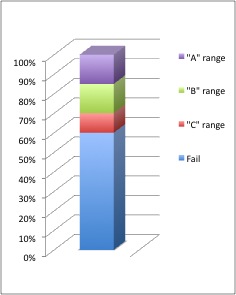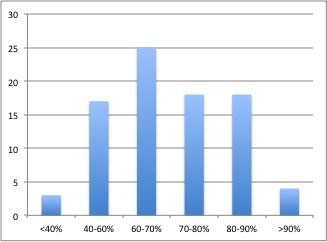Physics 116A (Winter 2012): Mathematical Methods in Physics I
Course information
Instructor: Stefano Profumo
Office: ISB, Room 325
Phone Number: 831-459-3039
Office Hours: Wednesday 2:00PM - 3:30PM, or by appointment
E-mail: profumo AT ucsc.edu
Teaching Assistant: Tim Linden
Office: ISB, Room 320
Phone Number: 831-459-4762
Office Hours: Tuesday, 2:00PM - 3:30PM, or by appointment
E-mail: tlinden AT ucsc.edu
Homework Grader: Sheena Schier
E-mail: calieshe AT gmail.com
Click here to download the syllabus in PDF format
Class Hours
Lectures: MWF, 11:00 AM - 12:10 PM, Thimann 1
Discussion Section: Tue, 6:00 PM - 7:10 PM, PhysSciences 110
 Special Midterm Prep Discussion Section: Thursday Feb 16, 4-6PM, ISB 231,
Special Midterm Prep Discussion Section: Thursday Feb 16, 4-6PM, ISB 231,
Course description
- Infinite series including power series
- Complex numbers and some functions of a complex variable
- Topics in linear algebra including matrices and determinants, solving systems of linear equations, eigenvalue problems and matrix diagonalization
- Asymptotic expansions and special functions
Prerequisites
- Physics: 5A/L, 5B/M, 5C/N
- Mathematics: 23A, 23B
Required Textbook
- Mathematical Methods in the Physical Sciences by Mary L. Boas

Other Textbooks
- Mathematical Methods for Scientists and Engineers by Donald A. McQuarrie
- Essential Mathematical Methods for Physicists by George B. Arfken and Hans J. Weber
Course Outline
| Topic |
Reading |
Period (tentative!) |
| Infinite Series, Power Series |
Boas, Chapter 1 |
Jan 9 - Jan 20 |
| Complex Numbers |
Boas, Chapter 2 |
Jan 20 - Jan 30 |
| Linear Algebra and Vector Spaces |
Boas, Chapter 3 |
Feb 1 - Mar 2 |
| Special Functions |
Boas, Chapter 11 |
Mar 2 - Mar 12 |
| Review |
|
Mar 14 - Mar 16 |
Course Grading and Requirements
Student evaluations will be based on their performance in the following three tasks. The tasks and their relative weights in determining the students' overall course grades are given below (see however below for special ``reward points''):
- 35% Weekly Homework (9 problem sets)
- 25% Midterm Exam (Friday February 17, 11 AM - 12:15 PM)
- 40% Final Exam (Monday March 19, 12:00-3:00 PM)
|
Weekly Homework
Weekly homework assignments will be handed out each Wednesday and are due at
the beginning of class on the Wednesday of the following week. The homework problem
sets are (effectively) not optional, and will consist of a few problems from Boas' textbook. You are encouraged to discuss the class material and homework
problems with your classmates and to work in groups, but all submitted problems
should represent your own work and understanding. Late homeworks can be submitted to the grader, but will not contribute any points to the final grade.
The Grader will grade each homework, and is responsible for the given grade.
Grades for each homework set will consist of 2 points (mostly correct), 1 point (less than 50% correct) or 0 points (no homework returned in time).
Homework solutions will be typically made available on the course website on the homework due date.
Discussion Section and Reward Points
Discussion Section will be typically devoted to discussing problems in the assigned homework.
The discussion will be lead by TA Tim Linden, who will survey the audience and suggest which homework problems to examine at the beginning of the section.
The problems will then be discussed at the board by "volunteers", who will be awarded "Reward Points" (at the discretion of the TA).
Reward Points will be counted as an extra credit towards the final, overall course grade and can contribute up to 10% of the overall grade.
Midterm and Final
The midterm exam and the final exam will be held in the same classroom as
the lectures. The midterm will be a 1 hour written exam in class (regular lecture time) on Friday February 17, on the material covered up to
Friday February 15, while the final (Monday March 19, 12:00PM-3:00PM) will be three hours long and cover
the complete course material. Both the midterm and the final will be open-book (you can bring with you any book or notes), but only non-graphical,
non-programmable calculators will be allowed (it will be up to the discretion of the Instructor to decide whether a calculator is or not allowed). Laptop
computers and cellular phones of any kind will not be allowed. A practice midterm and final will be handed out a week before the exams. You must take the
final exam to pass the course.
The minimal score not to fail the class is 60%.
The final grade will follow the percent guideline below:
- 60% to 70%: C range
- 70% to 85%: B range
- 85% to 100%: A range
|

|
Homework exercises
Midterm results
The average (and median) midterm score was 69% (12.5 points out of 18).
The score per problem was as follows (3 points per problem):
- Problem #1: 2.0 (66%)
- Problem #2: 1.6 (52%)
- Problem #3: 2.5 (82%)
- Problem #4: 1.7 (57%)
- Problem #5: 2.3 (76%)
- Problem #6: 2.7 (89%)
The distribution of grades is shown in the chart to the right.
|

|
Handouts
FOR THOSE USING THE 2ND EDITION: CLICK HERE TO DOWNLOAD THE CORRELATION LIST OF 2ND AND 3RD EDITION PROBLEM NUMBERS FOR PROBLEMS WHICH APPEAR IN BOTH EDITIONS
Galileo's Corner
La filosofia e' scritta in questo grandissimo libro che continuamente ci sta aperto innanzi a gli occhi (io dico l'universo), ma non si puo' intendere se prima non s'impara a intender la lingua, e conoscer i caratteri, ne' quali e' scritto. Egli e' scritto in lingua matematica, e i caratteri son triangoli, cerchi, ed altre figure geometriche, senza i quali mezzi e' impossibile a intenderne umanamente parola; senza questi e' un aggirarsi vanamente per un oscuro laberinto. (Galileo Galilei, Il Saggiatore, 1623)
Philosophy (Knowledge) is written in that great book which ever lies before our eyes (I call it the Universe), but we cannot understand it if we do not first learn the language and grasp the symbols in which it is written. It is written in mathematical language, and the letters are triangles, circles and other geometrical figures, without which means it is humanly impossible to comprehend a single word; without knowledge of those, it's a useless wandering in a dark labyrinth.








